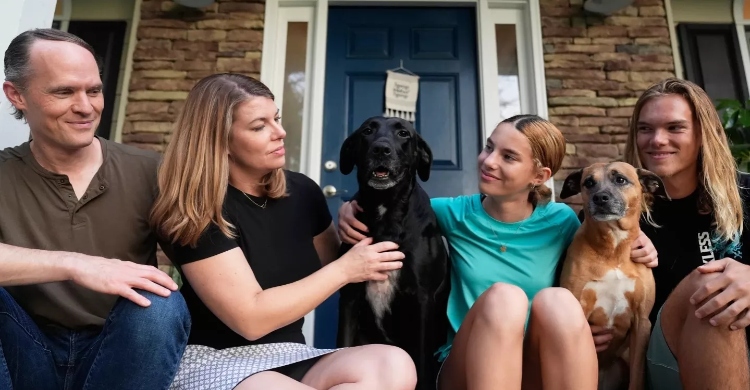Losing a family pet helps children learn about grief, say psychologists


Losing a beloved pet is often the first time a child experiences death — an event that can profoundly shape how they understand loss and cope with grief later in life, experts say.
According to psychologists and pet bereavement specialists, parents and guardians play a vital role in helping children accept the painful permanence of death and guiding them through a healthy grieving process.
“People are often uncomfortable talking about death and grief, but it’s the one certainty in life,” said Deirdra Flavin, CEO of the National Alliance for Children’s Grief. “We need to be open to those conversations.”
Children process loss differently
A child’s age and personal experiences greatly influence how they perceive death. While some may express sadness or anger openly, others may struggle to process their emotions. Psychologists note that younger children, who think more literally, often find it difficult to grasp the finality of death, while older children may need more emotional support.
“Even children as young as four might know about death through stories but not understand it’s forever,” said Colleen Rolland, president of the Association for Pet Loss and Bereavement.
Parents like Elizabeth Perez, who lost the family dog in a road accident, say each child reacts differently. “Everybody was feeling it differently and at different times. We didn’t feel prepared,” Perez said, describing how one of her daughters suffered nightmares for months after witnessing the accident.
Be honest and avoid euphemisms
Experts emphasize using clear, age-appropriate language instead of euphemisms like “went to sleep” or “got lost,” which can cause confusion or fear.
“That kind of language can alarm children,” said Flavin. “If you tell them the pet ‘went to sleep,’ they might fear going to bed themselves.”
When Leah Motz’s two-year-old daughter asked about their elderly dog’s death, Motz explained simply that “his body was broken and couldn’t fix itself” and that they were “helping him die.”
Acknowledge emotions and provide support
Psychologists stress that pet loss is a real and valid form of grief, often underestimated by adults. “Children’s grief tends to be trivialized,” Rolland said.
Behavioral changes such as tantrums, sadness, withdrawal, or loss of interest in usual activities are normal responses, said clinical psychologist Raquel Halfond. However, if those emotions persist and interfere with daily life, parents may need professional support for their child.
Grieving together helps healing
Children often model how adults respond to grief. Experts encourage parents not to hide their emotions, as showing sadness teaches empathy and emotional openness.
“It’s okay for children to see you feeling sad,” said Halfond. “If they don’t, it can be confusing.”
Parent Meaghan Marr, who lost two dogs while her children were young, said the experience helped her kids understand that sadness is a natural part of love and loss. “It hurt to lose them, but they made our lives so much better while they were here,” she said.
Finding closure through remembrance
Experts suggest helping children heal by creating rituals or memories — such as holding a small funeral, drawing pictures, donating to animal shelters, or recalling happy moments.
These gestures, psychologists say, help children find meaning in their loss while keeping their pets’ memories alive — a gentle introduction to the universal reality of grief and healing.
Source: AP
